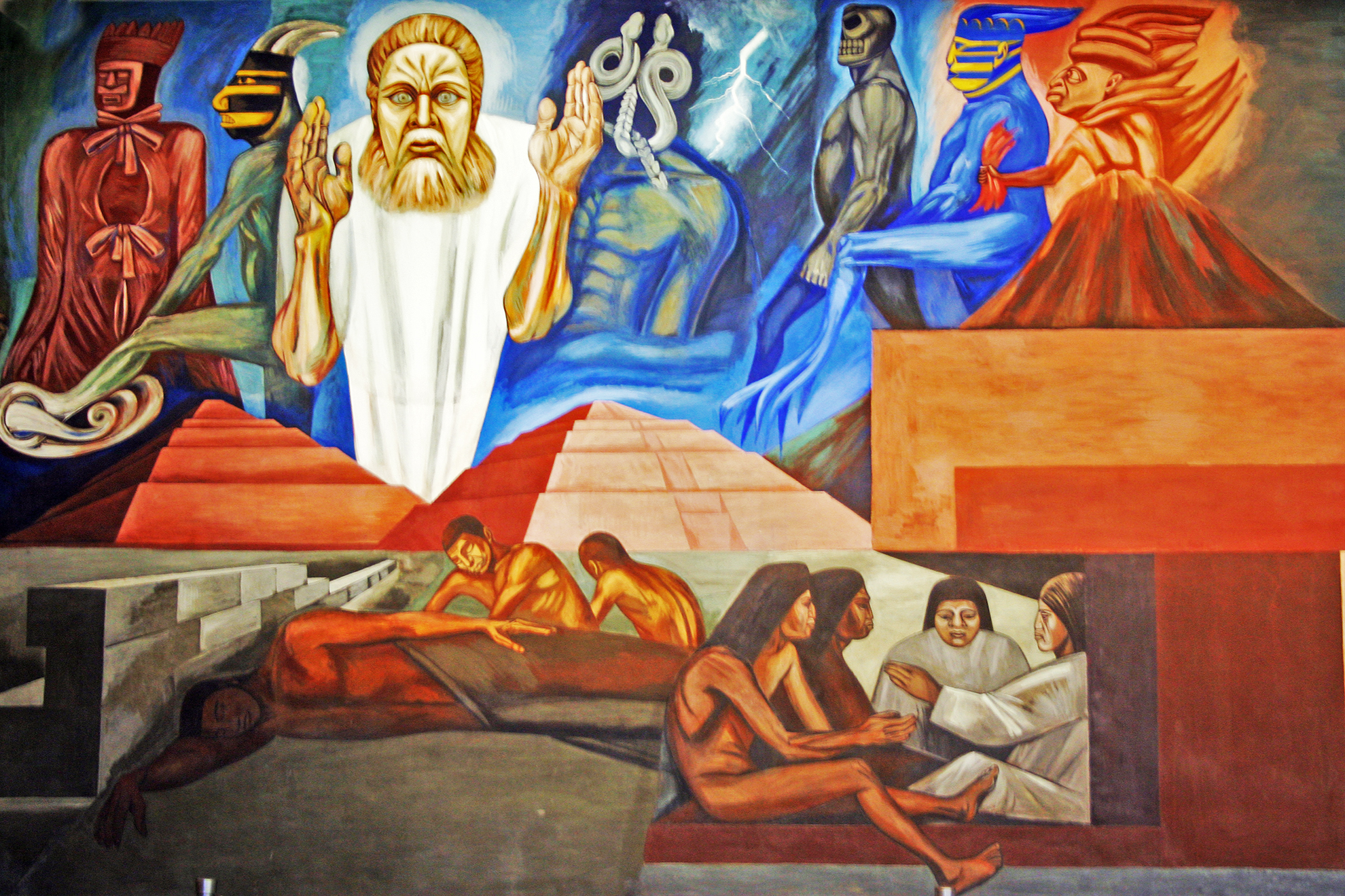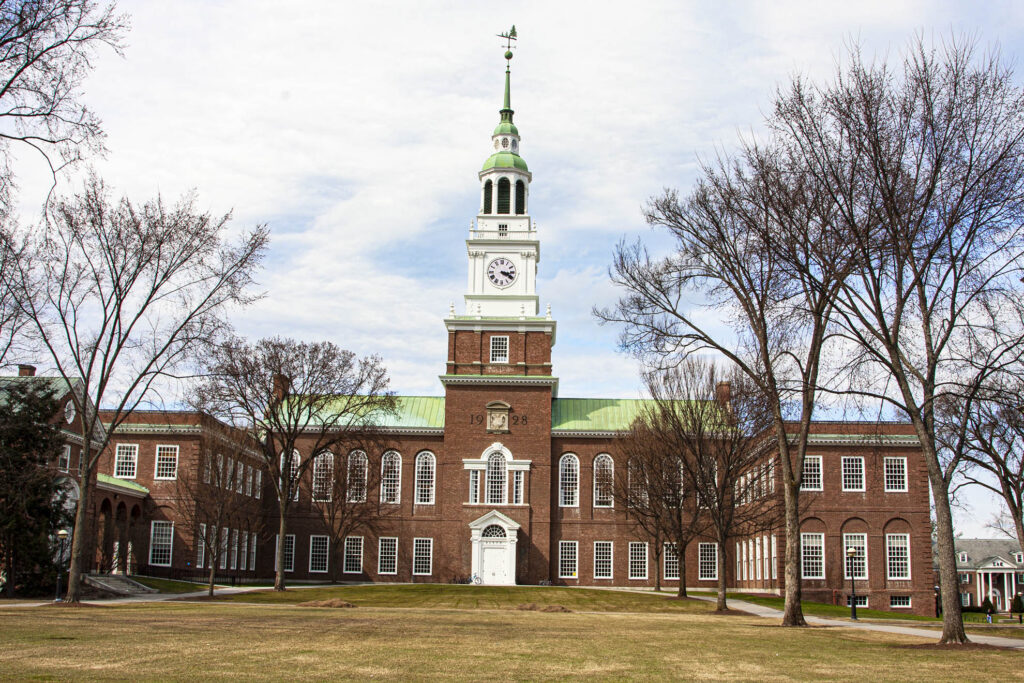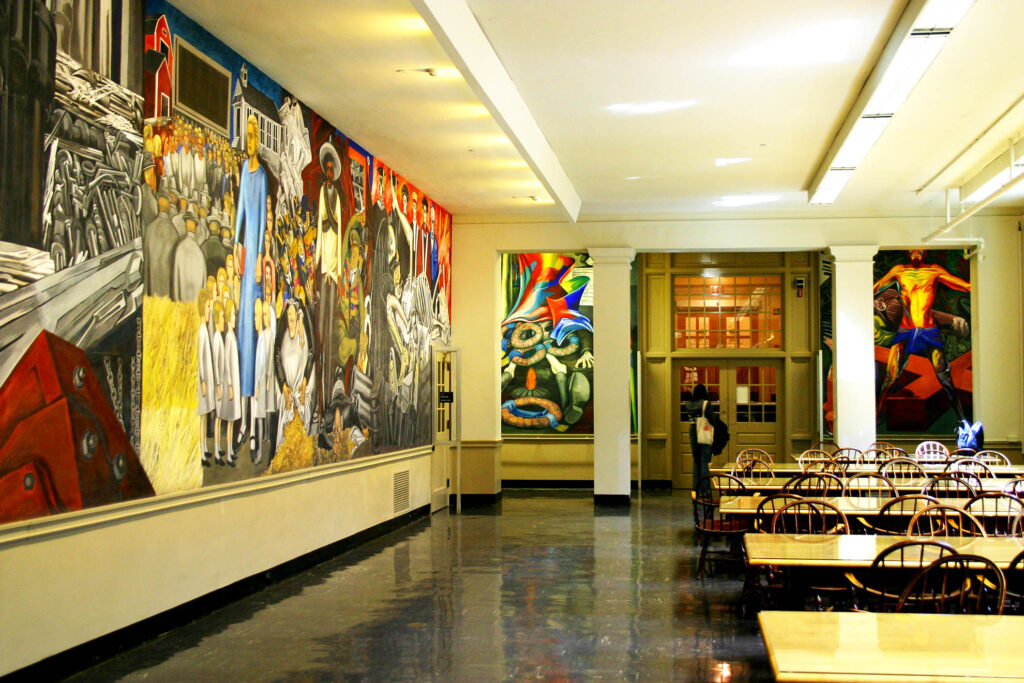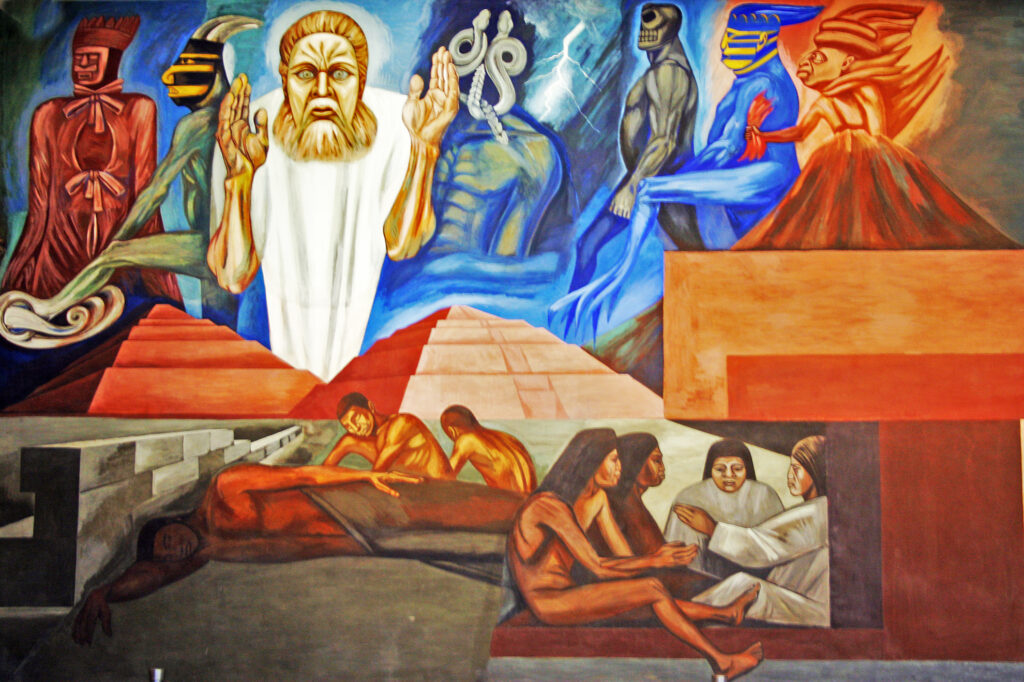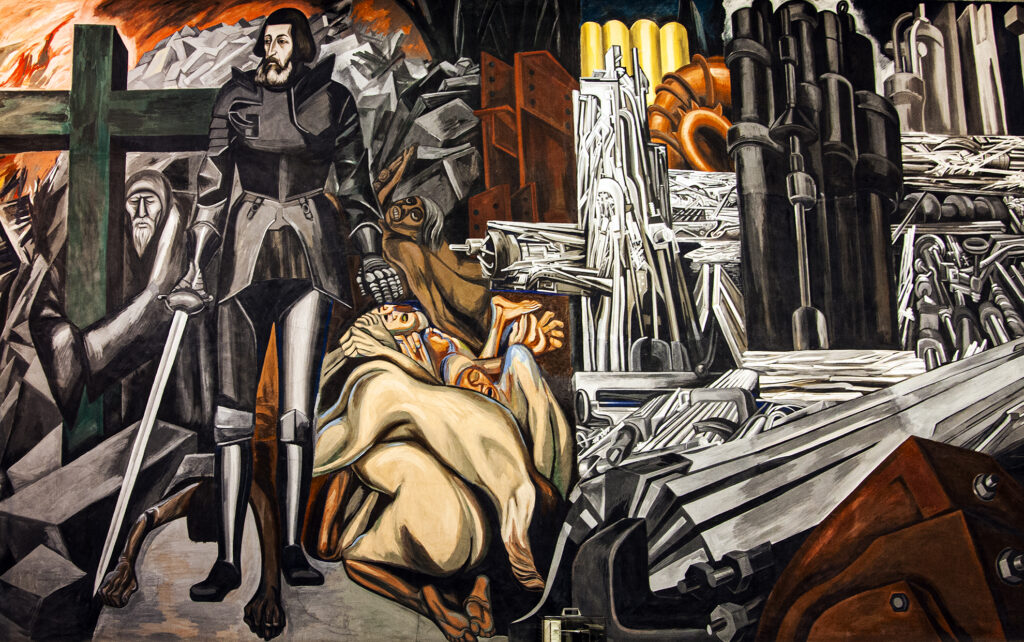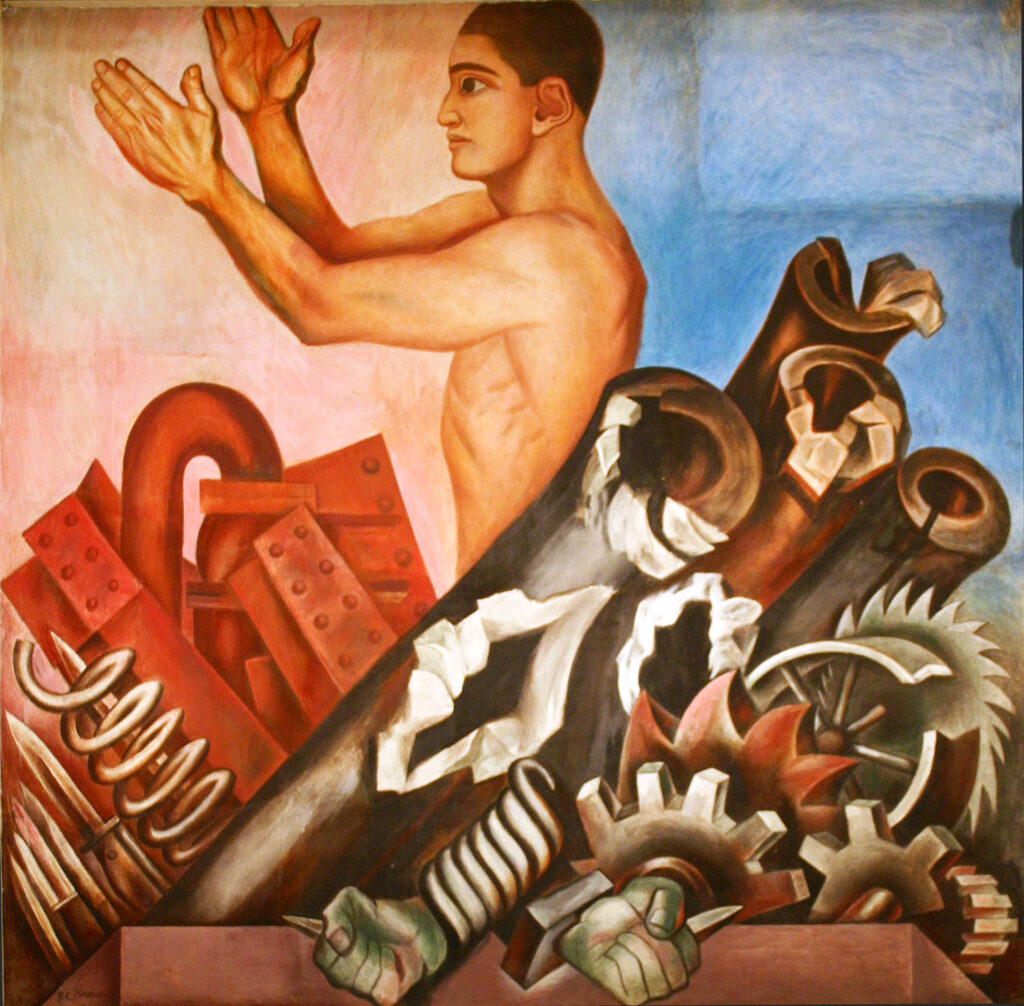A college library in New Hampshire is an unlikely place to look for a major body of work by one of the 20th-century’s most renowned muralists. That the murals are in New Hampshire is surprising enough, but even more surprising is their message — one that was not generally popular at the time they were painted.
The Artist
As a painter, Jose Clemente Orozco was a product of the intense artistic and political foment in Mexican society at the beginning of the 20th century. Revolution was in the air and the renewed awareness of indigenous culture and art forms inspired Orozco. During the 1920s the Mexican government fostered this patriotic mood by hiring Orozco, Diego Rivera and David Alfaro Siqueiros to paint murals in public buildings. This launched the fame of all three, who became known as Los Tres Grandes, the three greats.
But by 1927 Orozco’s work had become controversial in Mexico, and loss of commissions led him to New York, where his first American mural was painted in 1930 at Pomona College, considered the first modern mural in the United States.
An Epic Mural Cycle
In 1932 he was invited to Hanover to paint a fresco in a hallway of Dartmouth’s Baker Library, which became the first of a two-year series. Begin in that hallway, bypassing the larger works, through a small door in the far-right corner. Looking back from halfway down the corridor, you’ll see Man Released from the Mechanistic, a man rising from a welter of stark gray tubes and forms, escaping from the slavery of machines.
The colors are bright and the forms dramatic, but mild compared to the ferocity of the work he then turned to in the library’s reserve rooms. There his theme became The Epic of American Civilization, a dynamic project that covers the walls of two reserve rooms and the space between.
Themes were inspired by the carnage of the Mexican revolutionary wars and World War I, as well as the cruelty of ancient religions and his view of the repressions of nationalism, militarism, capitalism and modern religion. These liberal, anti-cleric and even anarchistic concepts dominate the work in these rooms – murals that inspired considerable controversy at the time they were unveiled.
The southwest corner of the West Room portrays human sacrifice at the hands of masked priests, beginning his theme of religion dehumanizing mankind. The north wall shows militarism in the person of Aztec warriors, and hope for man arriving in the form of Quetzalcoatl, the ancient leader who abolished human sacrifice and fostered humanity.
The east room continues with the arrival of Cortez, beside a large cross dominating a landscape littered with bodies. In the next panel machines dominate humanity, and religion government, even schools are shown repressing the human spirit. A peasant leader (believed to be Emilio Zapata) is shown dominated by money, the church and the military.
His panel on the modern gods shows skeletal academics studying, while humanity dies. The cycle ends with a dead soldier, representing humanity, covered with wreaths and surrounded by symbols of nationalism.
But for all his dark vision of humanity’s lot, Orozco ends on a hopeful note. In the southeast corner, the vibrant Modern Migration of Man foretells man’s triumph over evil and between the two rooms is the peaceful world Orozco foresaw for mankind. Men triumph over machines and work cooperatively together. Over a doorway, a worker reclines reading a book, symbolizing the educated workman with time for learning.
A Dazzling Display
These panels, each painted on wet plaster laid down daily, are powerful stuff. Whether or not you agree with Orozco’s philosophy, his imagery and execution are stunning. Colors are vibrant, using dark tones to create drama and tension. The panels draw you onward, but despite the violence and ferocity, the central theme is mankind’s quiet, persistent dignity.
Side Dish
A few miles north of Hanover, along a road that parallels the wide Connecticut River with views across the valley, the town of Lyme is the quintessential image of a New England village. Beside the tall-spired white church at the head of the common is the Lyme Inn, a traditional country inn and home to Ariana’s Restaurant. Perhaps unexpected this far from the coast, Ariana’s is known for its seafood, flown in daily and presented in creative dishes inspired by cuisines as diverse as Thai (tiny shrimp in a savory broth with ginger and a touch chili) and Portuguese (a hearty and warming seafood stew). Those who prefer meat will appreciate the locally raised beef and veal. The inn’s spacious guest rooms have been restored and furnished with antiques and vintage pieces for a traditional, but nicely updated, country inn experience.
By Stillman Rogers
World Correspondent, Destinations
Photographer, Planetware.com

